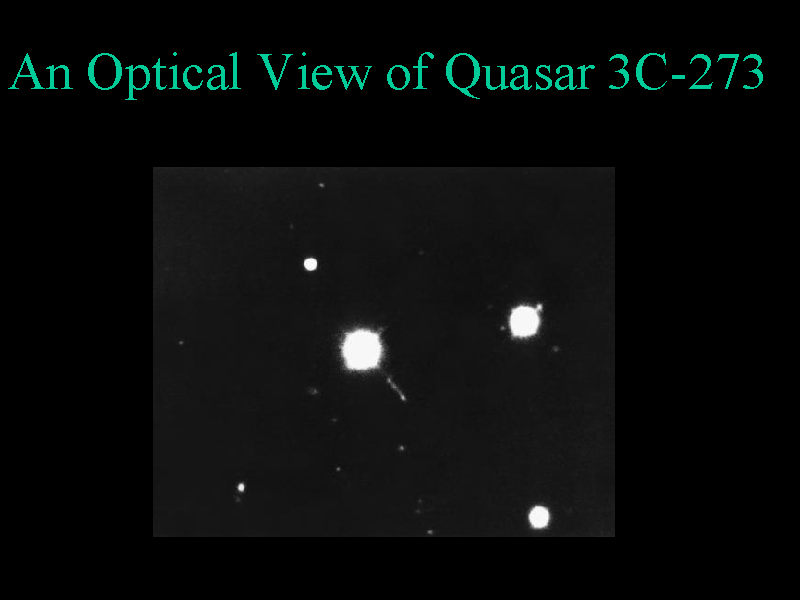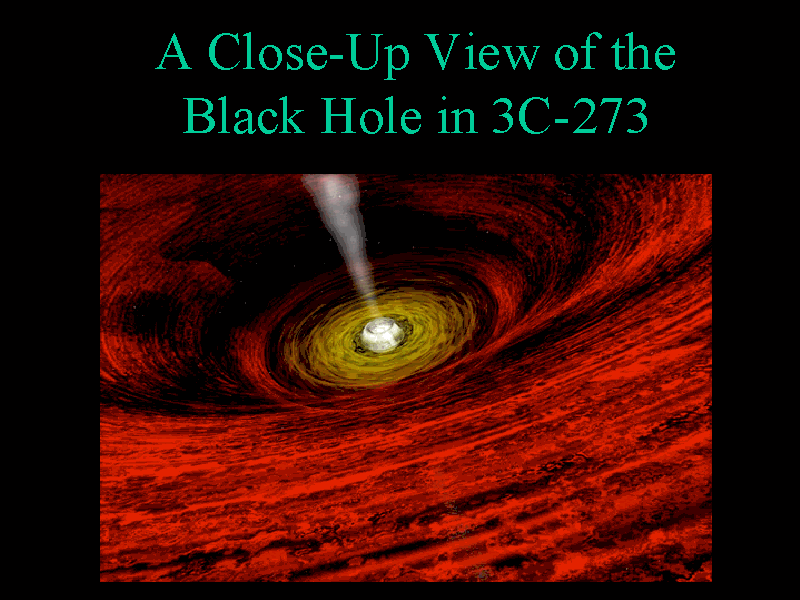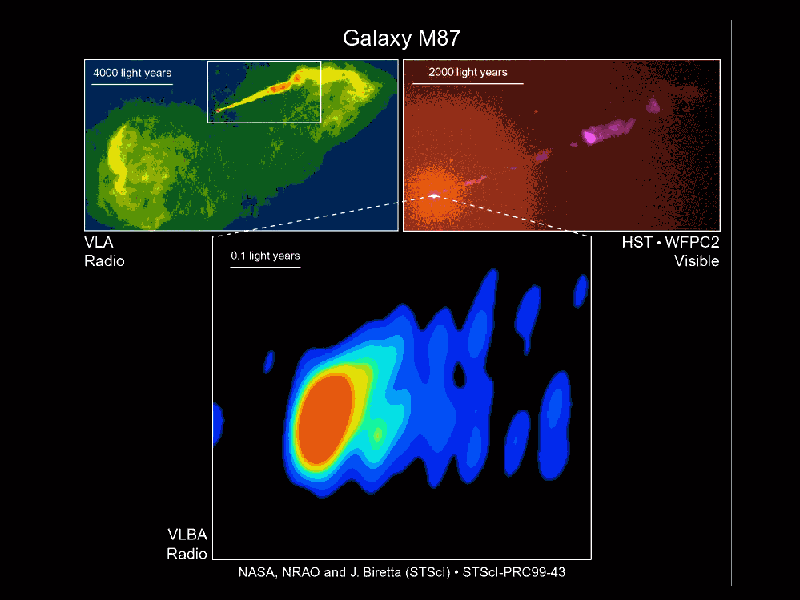Relativity and Black Holes
Supermassive For Black Holes, AGNS, and Quasars
Following more than three decades of gradual increase in the number of
independent pieces of evidence indicating the existence of super-massive
black holes in the centers of some galaxies, there has been a remarkable
strengthening of the observational evidence in the last few years which
has produced a rather compelling case for the presence of dark massive
objects in nuclei of most - if not all - galactic nuclei.
Ironically, black holes have now become perhaps the least exotic
candidates for identification with these dark objects.
 The study of the three-dimensional dynamics of stellar motions has
provided the strongest evidence in support of a mildly active black
hole in the center of our own Milky Way galaxy. Since our line of
sight towards the Galactic center is strongly obscured at the optical
and ultraviolet wavelengths by the presence of gas and dust in the Galactic
plane in the intervening 30,000 light years, many of the studies have been
done at the near-infrared band using the New Technology Telescope.
Observations of individual stars in the central few light-days of the
galaxy show velocities which indicate a black hole of mass approximately
2.6 million solar masses.
The study of the three-dimensional dynamics of stellar motions has
provided the strongest evidence in support of a mildly active black
hole in the center of our own Milky Way galaxy. Since our line of
sight towards the Galactic center is strongly obscured at the optical
and ultraviolet wavelengths by the presence of gas and dust in the Galactic
plane in the intervening 30,000 light years, many of the studies have been
done at the near-infrared band using the New Technology Telescope.
Observations of individual stars in the central few light-days of the
galaxy show velocities which indicate a black hole of mass approximately
2.6 million solar masses.
 This image has been smoothed to bring out the X-ray emission from an
extended cloud of hot gas
surrounding the super-massive black-hole candidate at the center of our
galaxy.
This gas glows in X-ray light because it
has been heated to a temperature of millions of degrees by shock waves
produced by supernova explosions
and perhaps by colliding winds from young massive stars.
This image has been smoothed to bring out the X-ray emission from an
extended cloud of hot gas
surrounding the super-massive black-hole candidate at the center of our
galaxy.
This gas glows in X-ray light because it
has been heated to a temperature of millions of degrees by shock waves
produced by supernova explosions
and perhaps by colliding winds from young massive stars.
Historically, the idea that some galaxies might have super-massive black
holes at their cores began with the discovery of quasars in the early 1960's.
Quasars were observed to emit tremendous amounts of energy in very small
volumes. The only explanation seemed to be the conversion into radiation
of the gravitational energy of matter in the potential well of a black hole.
Additionally, the class of galaxies with active nuclei (called AGNs for
"active galactic nuclei") are prime candidates for housing super-massive
black holes in their cores.
We conclude our tour with a visit to quasar 3C-273 which lies at a distance
of 2 billion light years.
 3C-273 is a strong radio source in the constellation Virgo.
This image is from the Kitt Peak 4-meter Mayall telescope and
shows the visible part of the object. The quasar radiates a hundred times
more light than the brightest
ordinary galaxy, and it has a jet of material seen here which measures some
150,000 light years in length.
3C-273 is a strong radio source in the constellation Virgo.
This image is from the Kitt Peak 4-meter Mayall telescope and
shows the visible part of the object. The quasar radiates a hundred times
more light than the brightest
ordinary galaxy, and it has a jet of material seen here which measures some
150,000 light years in length.
 If we zoom in towards
the center of the quasar, we see the material in the accretion disk swirling
around the central black hole.
High-speed beams of gas may be ejected perpendicular to the accretion disk,
forming the jets and lobes seen in many quasars and AGNs. Magnetic fields
generated in the disk are carried by the jets out to the radio lobes.
If we zoom in towards
the center of the quasar, we see the material in the accretion disk swirling
around the central black hole.
High-speed beams of gas may be ejected perpendicular to the accretion disk,
forming the jets and lobes seen in many quasars and AGNs. Magnetic fields
generated in the disk are carried by the jets out to the radio lobes.
 These images of the active galaxy M87 in Virgo were taken at radio and
visible wavelengths and show the jets forming near the central black hole.
These radio lobes may extend hundreds of thousands lightyears from the galaxy,
but the energy which generates them is all produced by the central
super-massive black hole.
These images of the active galaxy M87 in Virgo were taken at radio and
visible wavelengths and show the jets forming near the central black hole.
These radio lobes may extend hundreds of thousands lightyears from the galaxy,
but the energy which generates them is all produced by the central
super-massive black hole.
Go to next section.





